A Different Kind of Moonwatch: The Omega Speedmaster Moonphase 345.0809 Speedymoon
OmegaPublished by: Tyler Frederick
View all posts by Tyler Frederick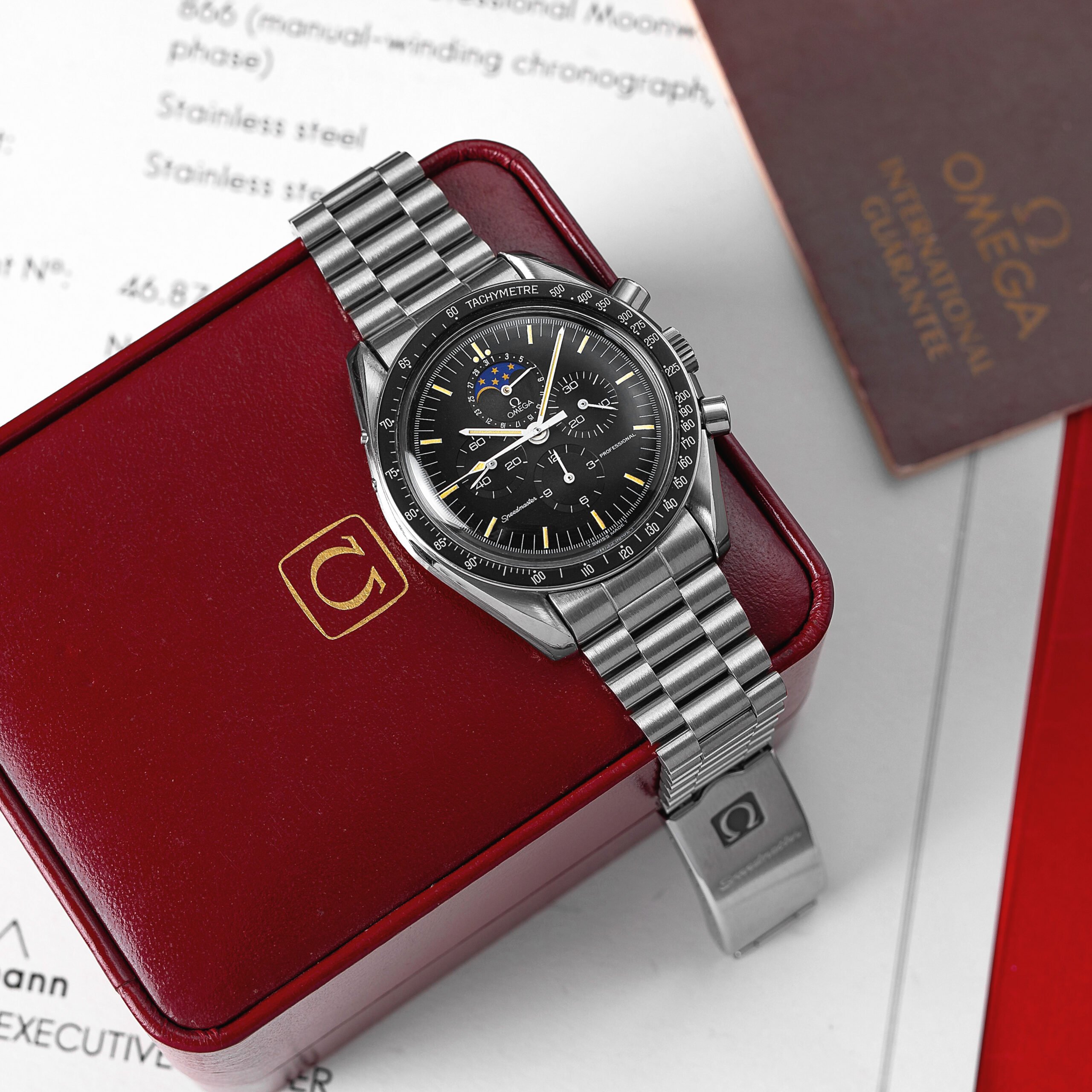
At this point, it’s safe to say that everyone knows the legend of the Omega Speedmaster. While it’s primarily recognized as a three-register chronograph, there have been several variations of the Speedmaster over the years, including the Omega Speedmaster Moonphase 345.0809 Speedymoon — a Speedmaster with a moonphase complication. With Omega’s history as NASA and its “first watch worn on the moon” status, a moonphase variation of the Speedmaster just makes sense.
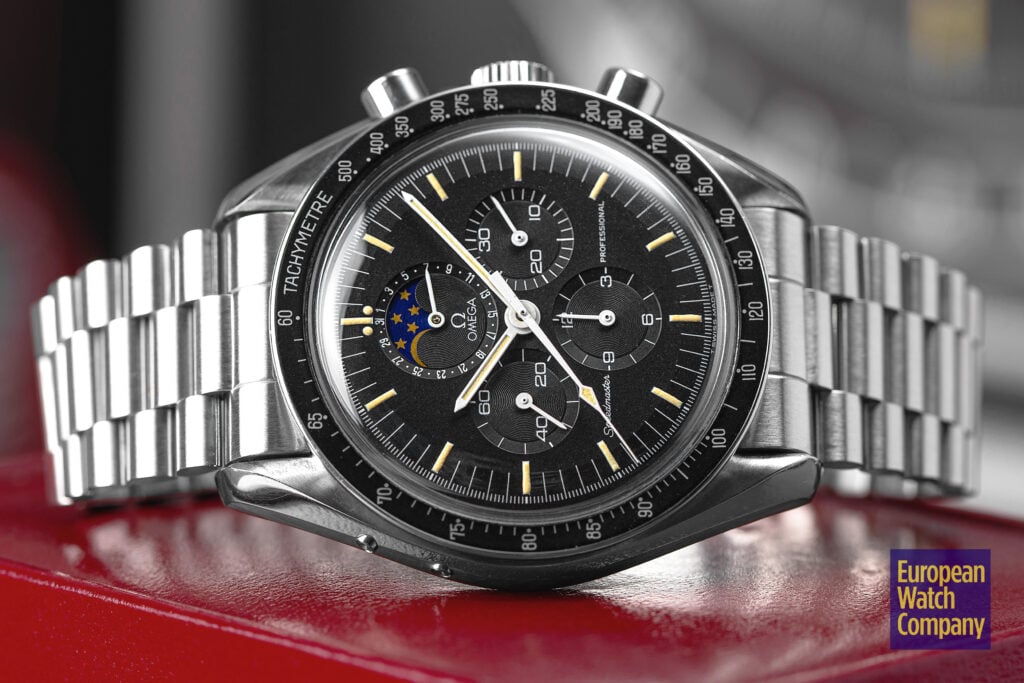
History
Moonphase complications weren’t new for Omega by the time the Speedymoon came around; like most makers, many of Omega’s triple-calendar dress watches back in the ’40s and ’50s were fitted with moonphase complications. Still, the Speedmaster remained in production without this poetic complication until the Speedymoon’s release in November of 1985. Over time, the Speedmaster Moon 345.0809 would go through three bracelet variations, and four moon disc variations during its production cycle, including some out of the ordinary firsts in design and details. Some variants are rarer than others, but we’ll get into that later.
The production run of the Speedymoon was brief, to say the least, as Omega killed off the reference a little over three years after its launch in January of 1989. In total only 2,000 Speedmaster Professional Moonphase watches were released, with 1,300 of those being the stainless steel reference 345.0809. Approximately 15% were produced as strap-only models for Italy and Mexico, leaving roughly 1,100 watches being offered in steel on a steel bracelet.
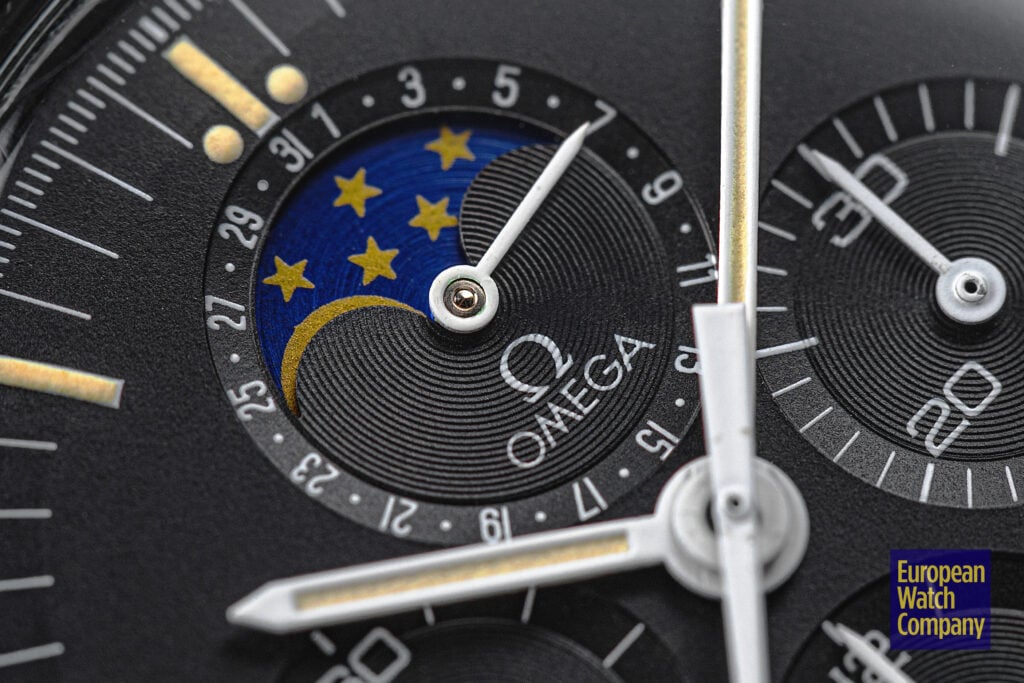
Design Details
The dial is often the main focal point of a watch, and the Speedmaster Moon doesn’t disappoint. With the incorporation of a moonphase complication, a fourth subdial is needed, increasing the risk of a dial feeling a bit cluttered. However, the addition of an elegant moonphase subdial is welcomed here, creating an almost dressy version of the Speedmaster. The brand’s logo is moved into the moonphase subdial, and its Speedmaster Professional text is split on either side of the subdial at 6 o’clock — a unique look, but it works with the additional subdial.
During production, the aesthetics of the moonphase disc went through multiple variations. The first two versions are similar. One is lighter in color than the other, and both show the moon with five stars on either side. The third version incorporates a smaller moon, a deeper blue/green color and features seven stars on either side, instead of five. A fourth variation is scarce, featuring a smiling moon, and only 25 of these variations are known to exist today. Of the variations, the example we’re looking at is of the earlier first versions.
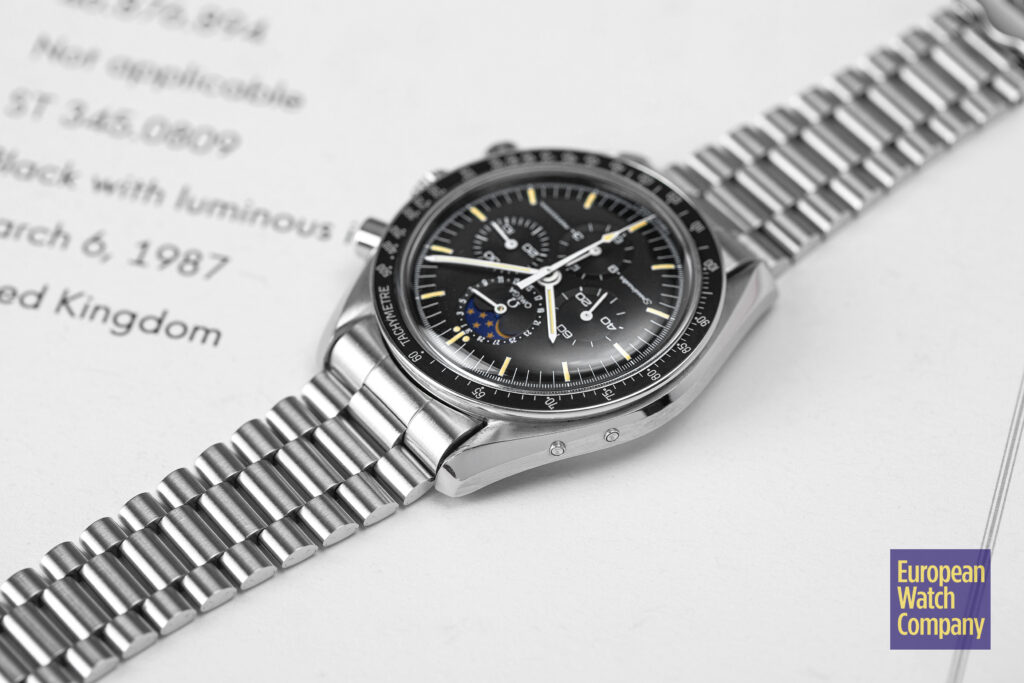
A watch isn’t complete without a case to house everything. Legendary case maker Charles René Spielmann — the creator of cases for the Rolex Daytona — produced the cases for this complicated beauty. The case was designed and reflected the usual Speedmaster but featured two new hidden pushers near the 10 o’clock position to adjust the moonphase and date. Omega used brushed finishing on the outer lugs of the Speedymoon’s case, with polished inner lugs to accentuate the sharpness of its sculpted profile.
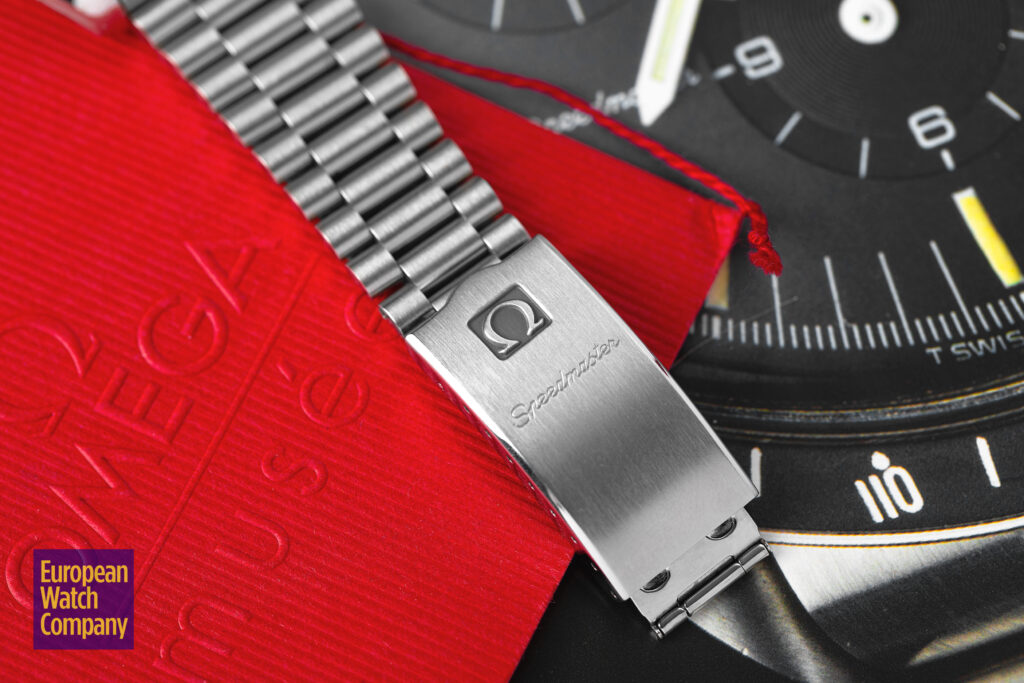
The bracelet also went through multiple iterations during the Speedymoon’s brief production run. Omega first released bracelet 1447, which was its first bracelet to implement a quick-release system, solid end links, and a lip on the clasp for easy opening. 1447 is the rarest bracelet variation of the bunch, and as luck would have it, it’s the one fitted to today’s example. Omega would then go on to release the 1450 bracelet as a replacement for 1447. The only difference between the two is the increased link size on 1450. The final version released would be bracelet 1479; the bracelet would lose both the easy open lip and quick release system and would only be in production from 1988-89. For those who may be wondering by now, the identifying reference of each bracelet is stamped into the inside of its clasp.
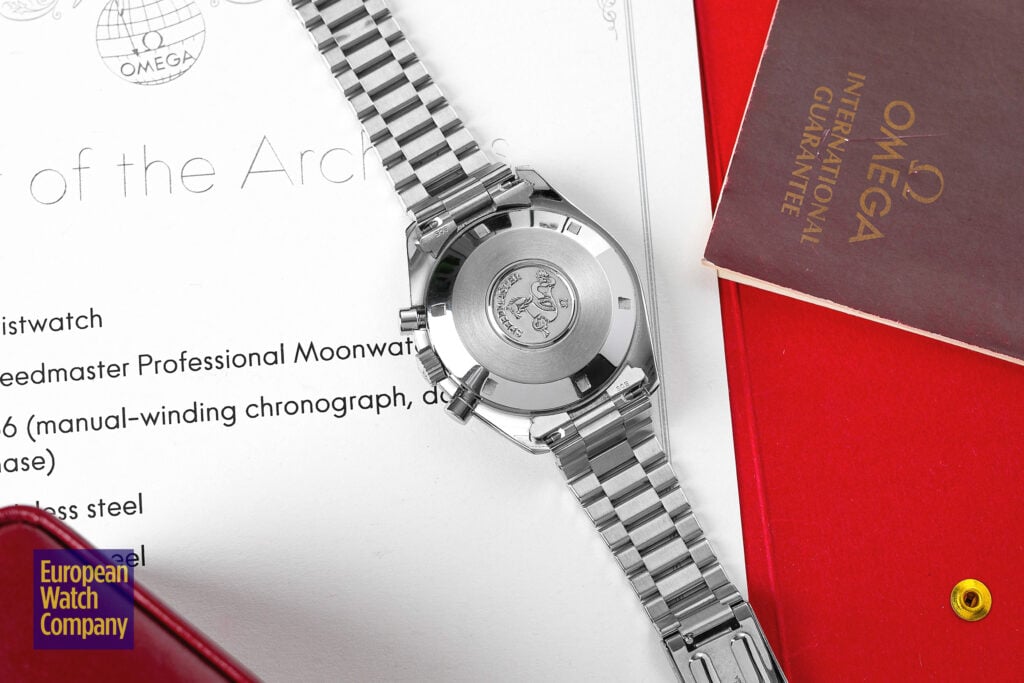
Inner Workings
The Lemania (1883) based Omega calibre 866 brings the Speedmaster Moon to life — a 17-jewel manual-winding movement. The 866 is a modified version of the calibre 861 that’s found in many Speedmaster references of the era, with the addition of a module to display the moonphase and date. When it comes to setting the proper date and adjusting the moonphase, life is made easy thanks to the pair of pushers we mentioned earlier. You can adjust both complications separately by pressing the top pusher to adjust the moonphase disc forward, and the bottom pusher to move the date forward; both functions only adjust in one direction.
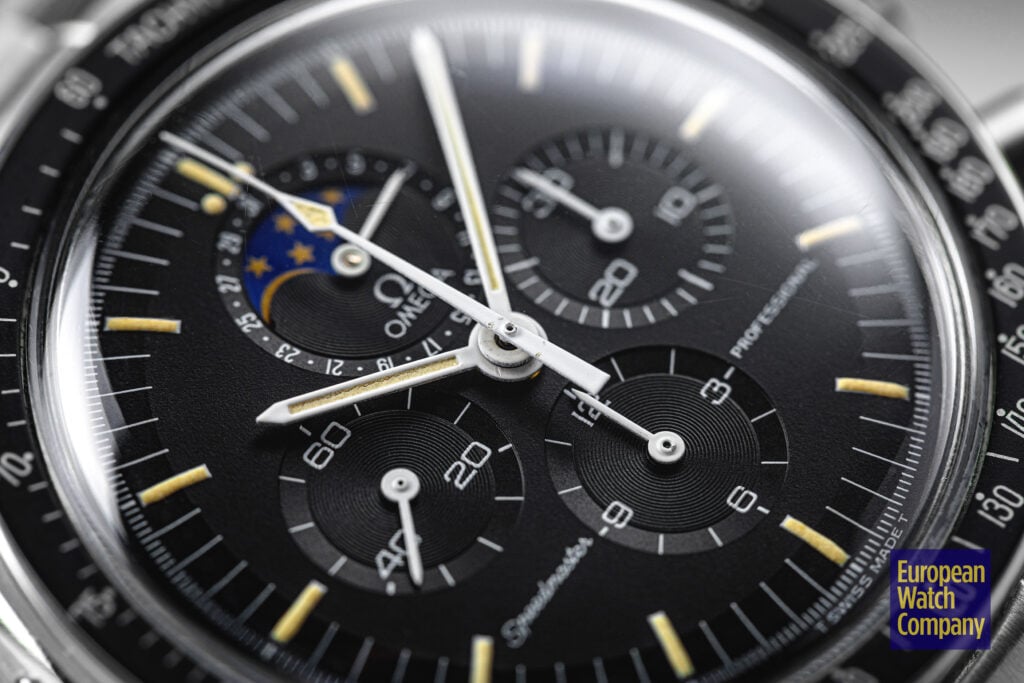
Versus The Competition
Finding a watch containing a moonphase complication is reasonably straightforward, considering how many modern brands produce watches with a moonphase. However, vintage tool or sport watches like the Speedmaster with the same rugged, workhorse design and a moonphase complication is much less common.
The most obvious competition is another variation of the Speedmaster Moon: the Speedmaster ref. 3575.20.00 with a white dial, blue accents, a stainless steel bezel and the same dial layout as the Speedymoon. In essence this is really the same watch in a more modern interpretation. Even its caliber — the 1866 — is little more than a slight revamp of the original 866.
To stay aligned with the combination of dressy calendar and moonphase complications housed in a more casual sports watch, the Movado Astronic HS 360 “El Primero” Triple Calendar Moonphase does the job perfectly. In this case, the Astronic is nominally more complicated, adding a triple-calendar indication alongside the moonphase and chronograph. Similarly to the Speedymoon, its dial is packed with information, bordering on cluttered.
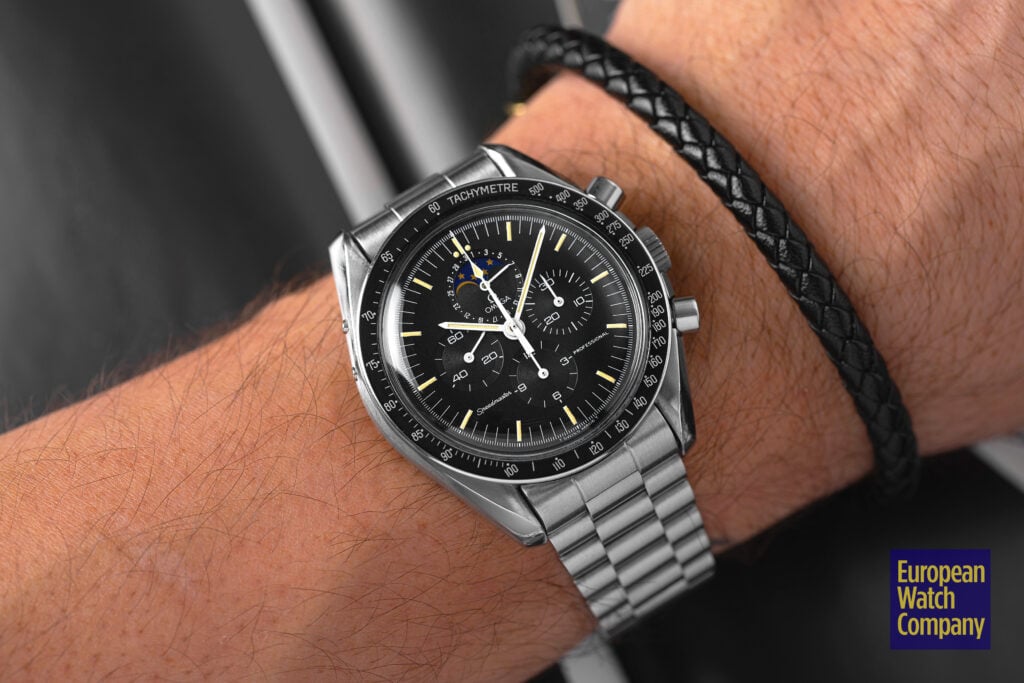
Personality
The Omega Speedymoon Speedmaster Moonphase 345.0809 is a perfect example of pushing the boundaries of design, and allowing genres to collide, and thanks to this it will speak to collectors looking for something less conventional. The brevity of its production run makes it even more appealing; the fact that a moonphase hasn’t existed in a Speedmaster prior to its creation will speak to those who look for the rarest of the rare.
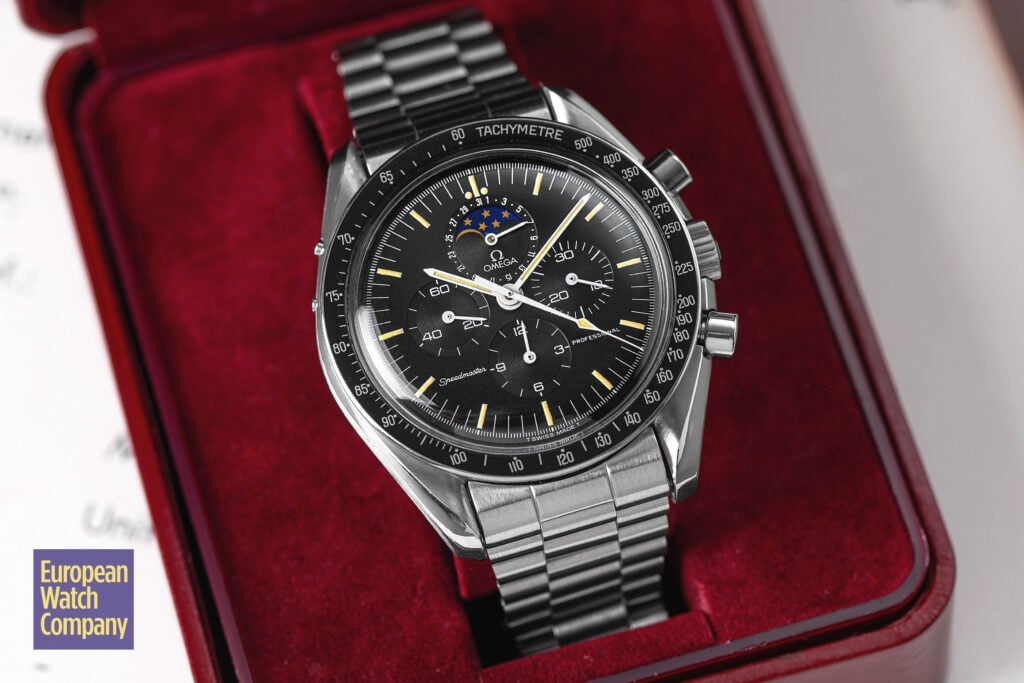
Final Thoughts
There’s nothing better than a brand trying something different for the sake of trying something different. To take a tried-and-true tool watch, and then incorporate a function — one that’s purely there for whimsy — like the moonphase takes a bit of guts. Given its short production run it wasn’t the biggest of successes for the brand, but at the same time we doubt that was the point. The Speedmaster legacy will live on with or without the occasional quirky sibling.
See More of the Omega Speedymoon Speedmaster Moonphase 345.0809
Visit Europeanwatch.com
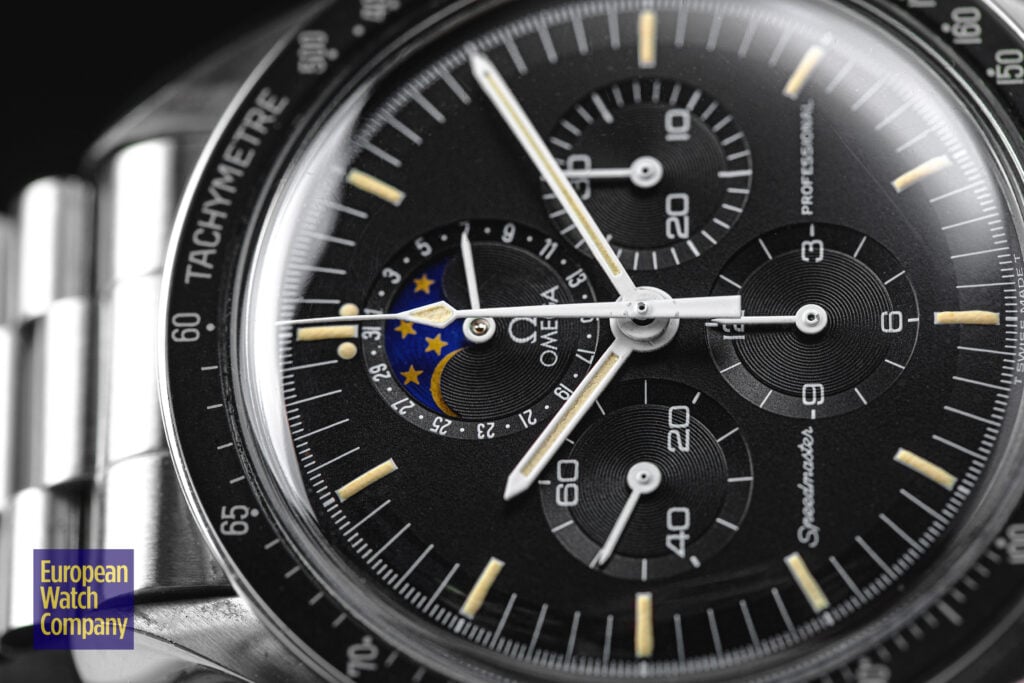


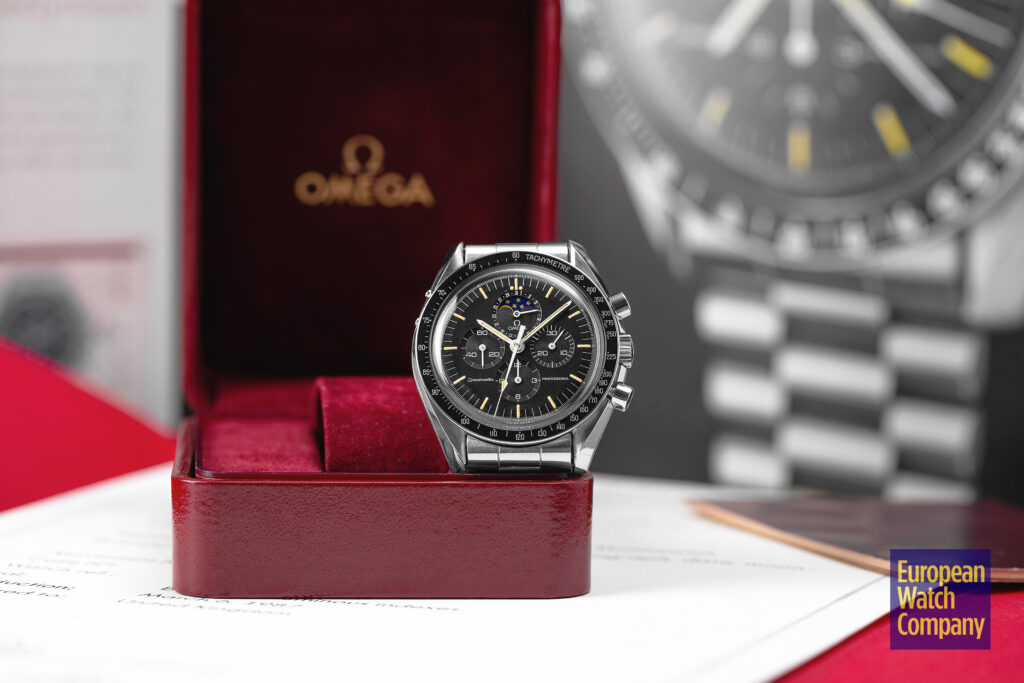
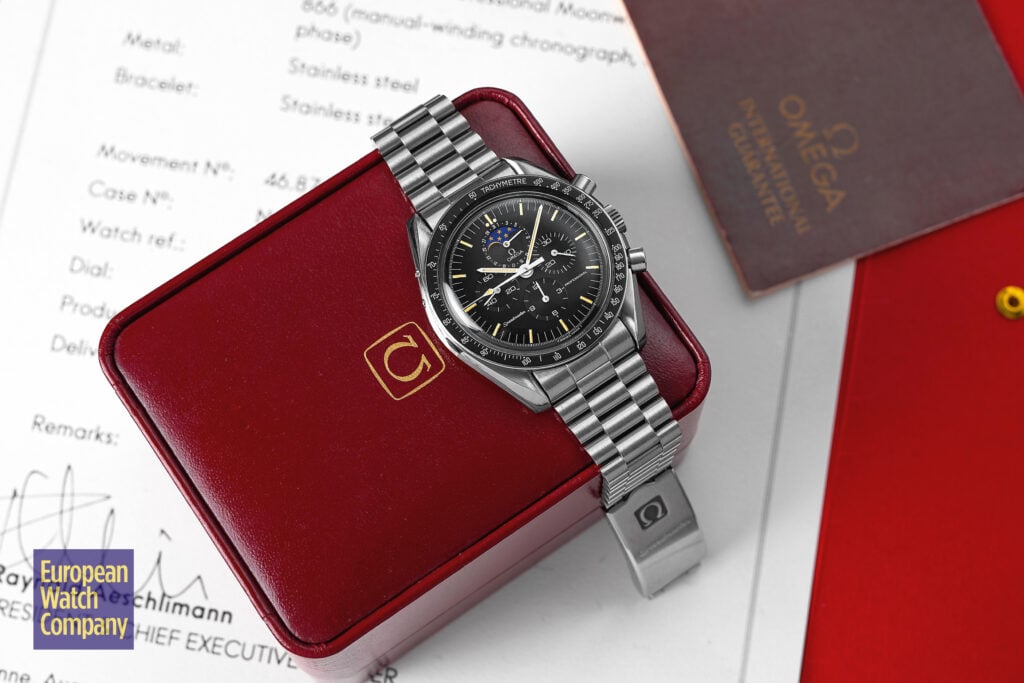
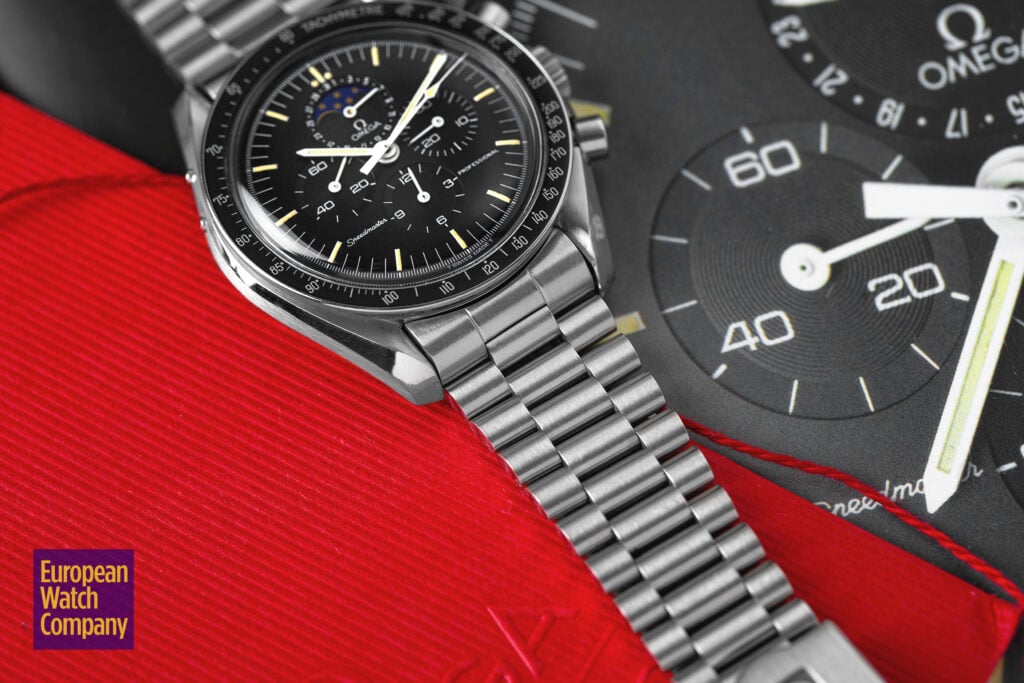
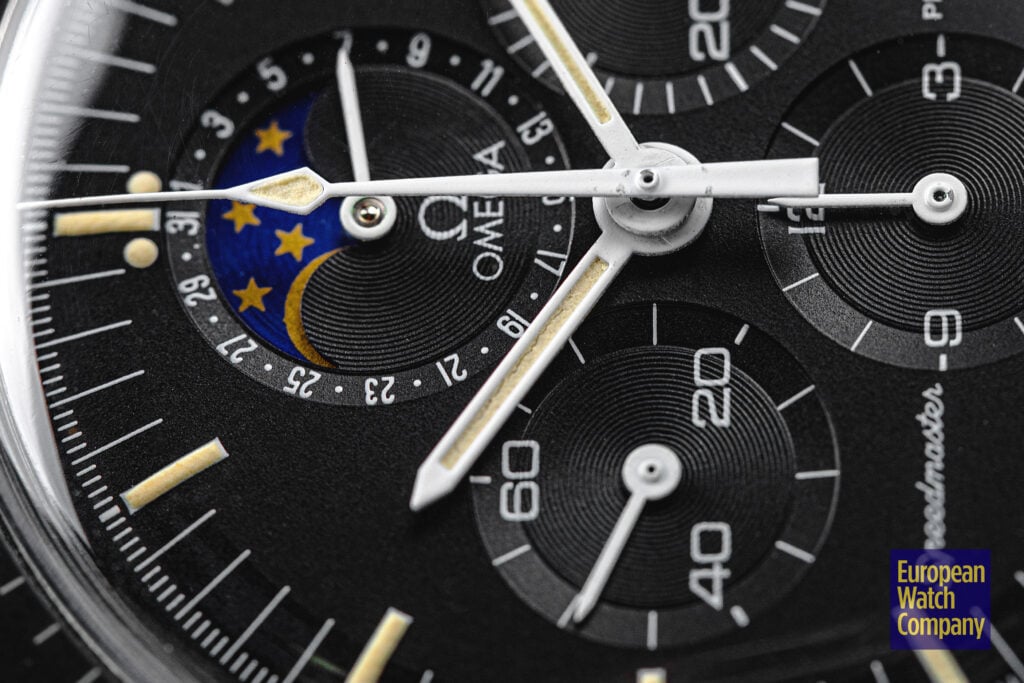
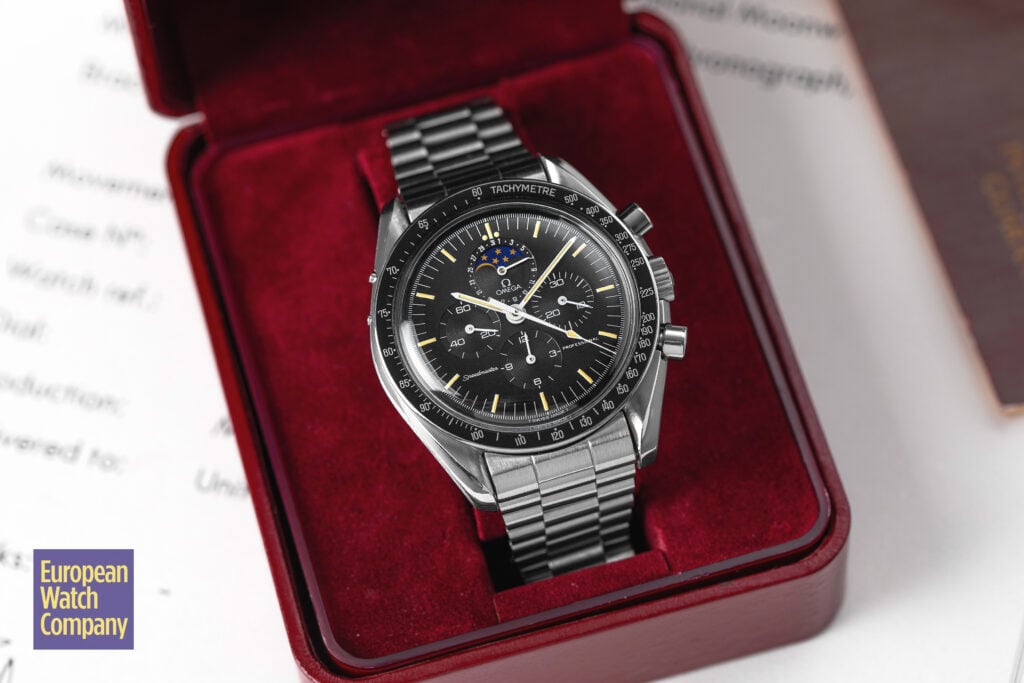
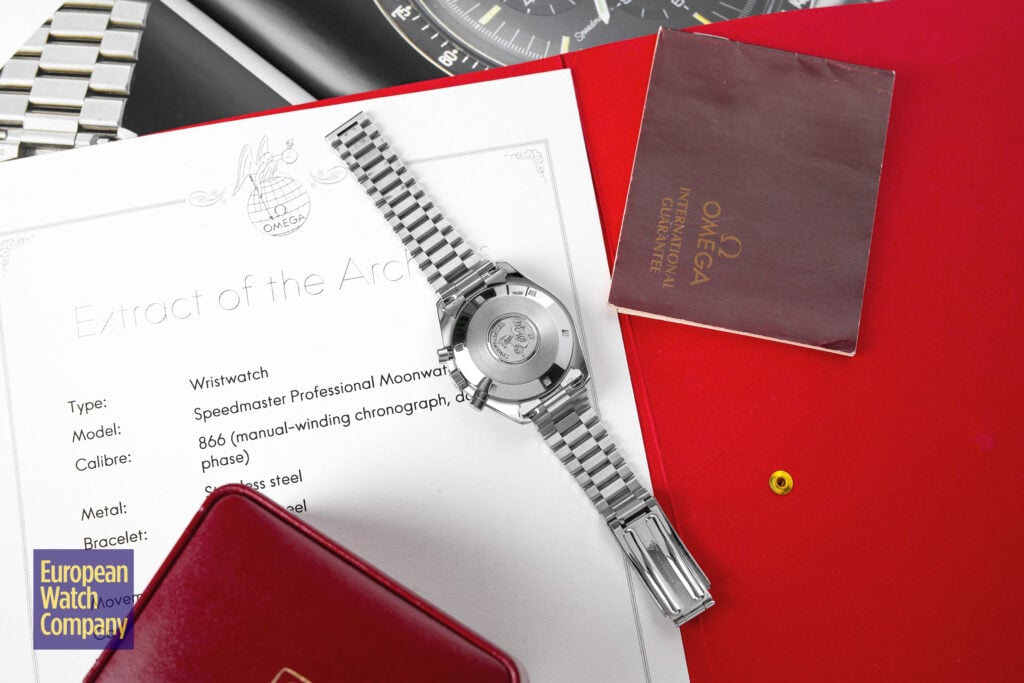
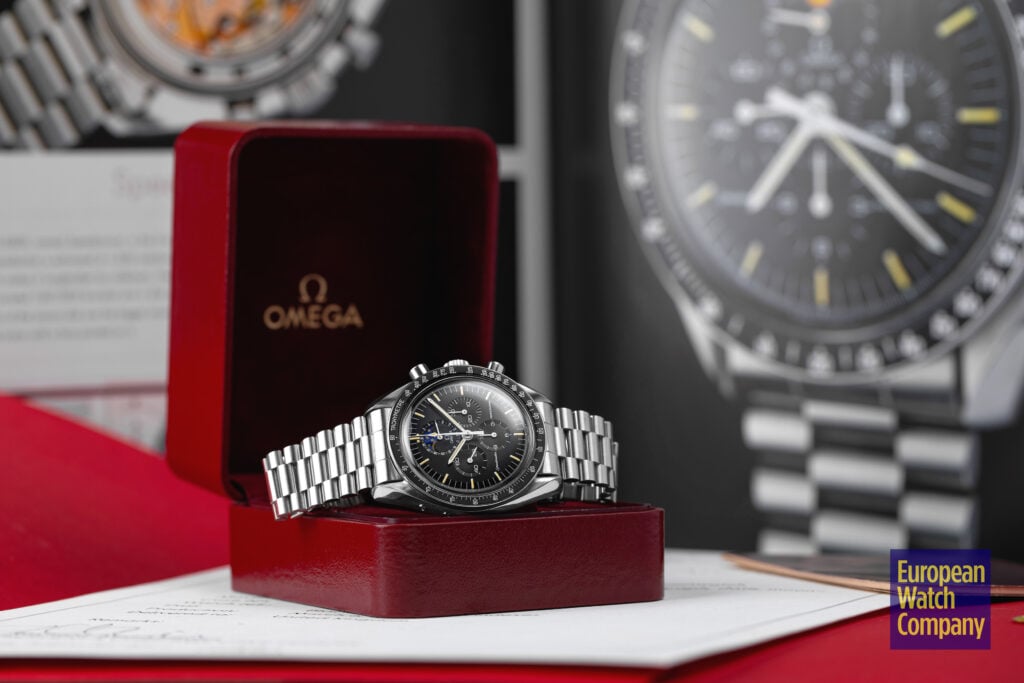

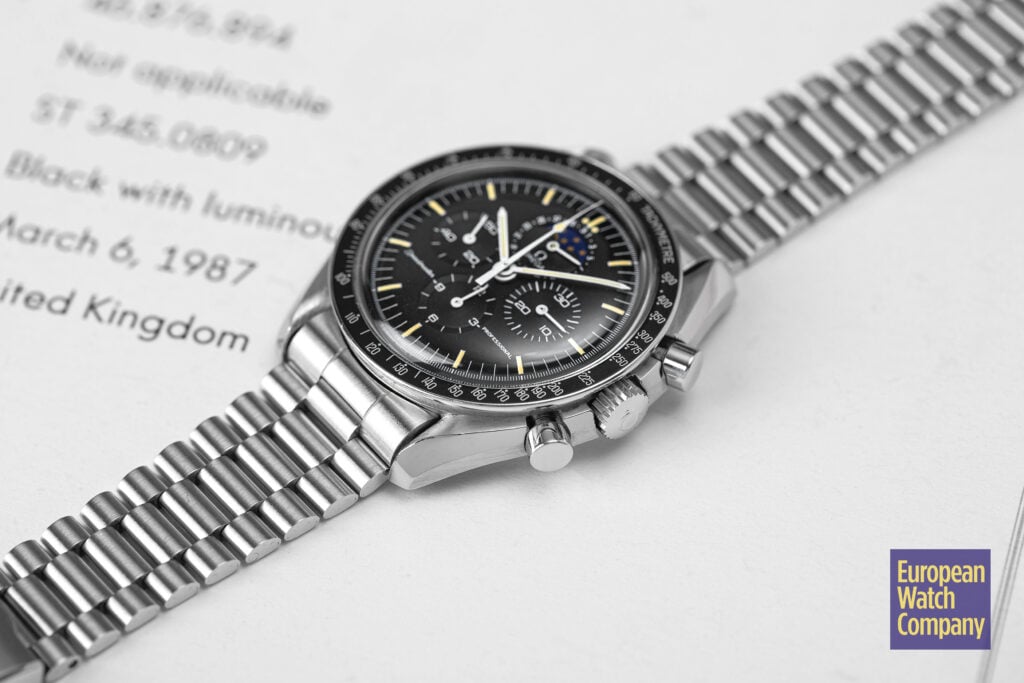
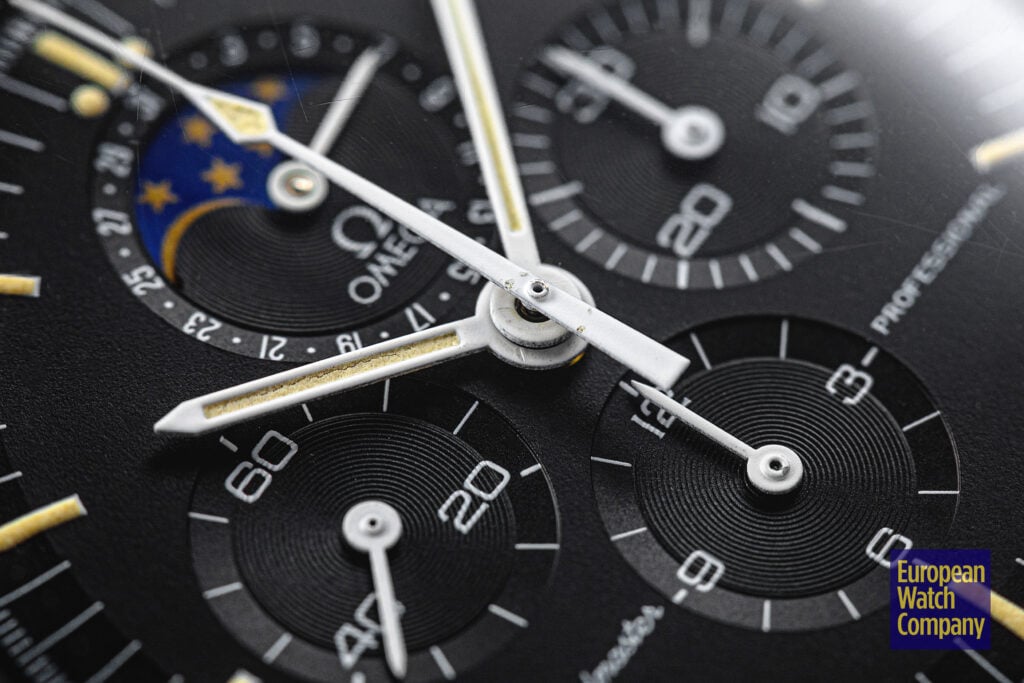

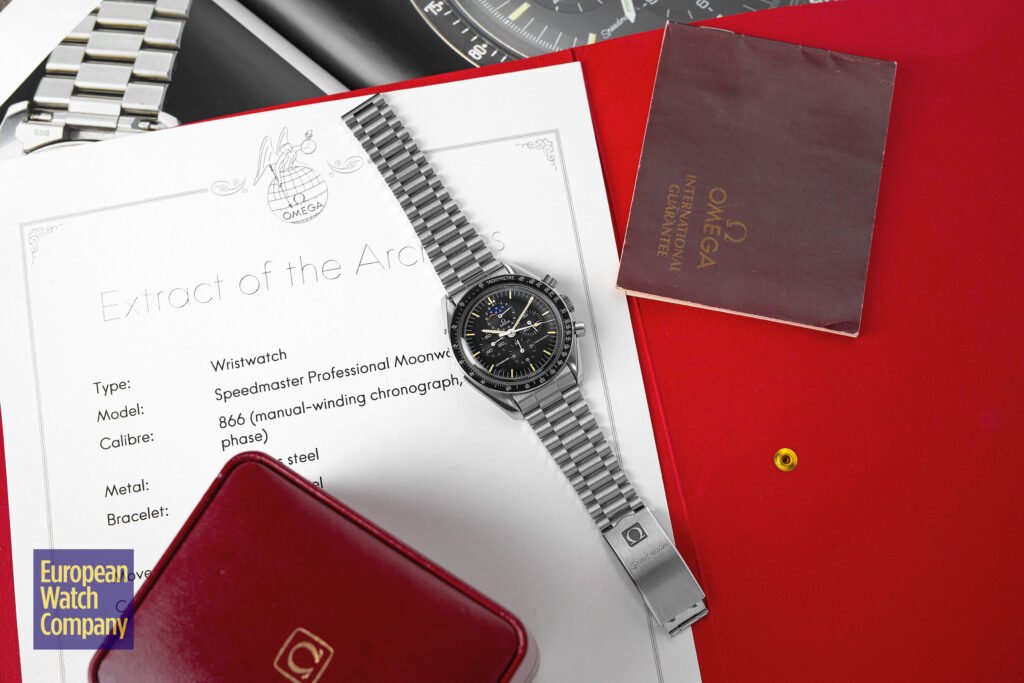

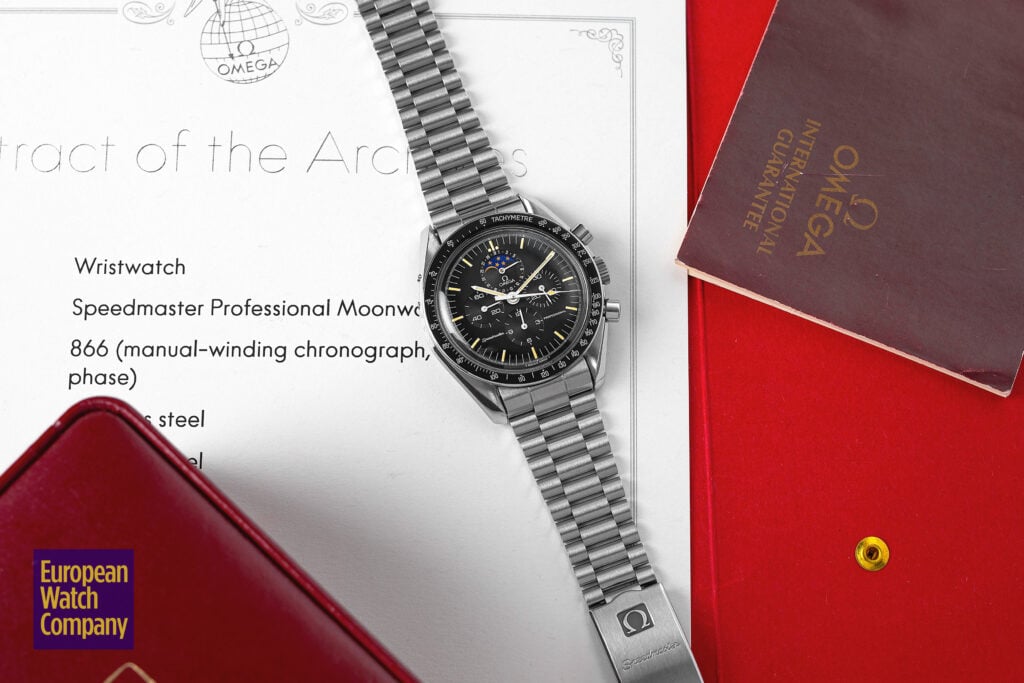
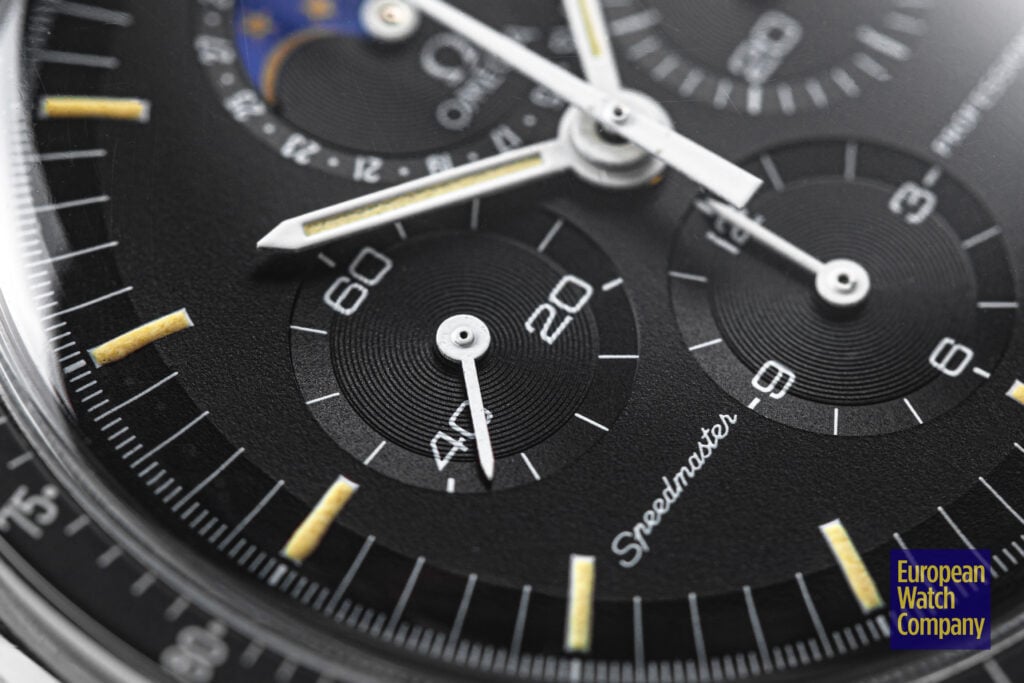
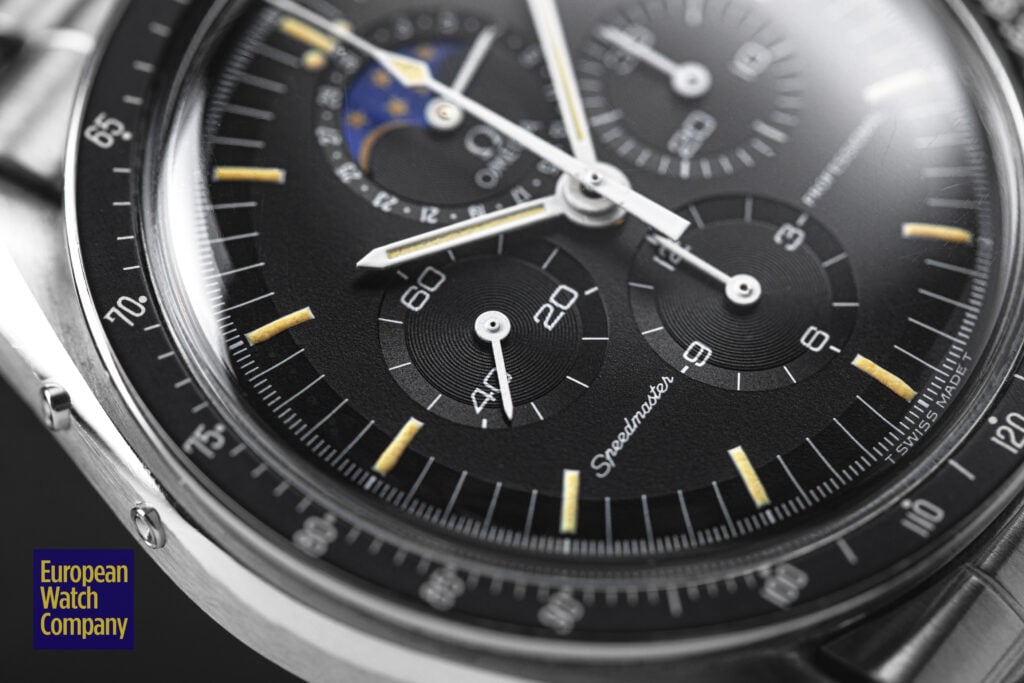



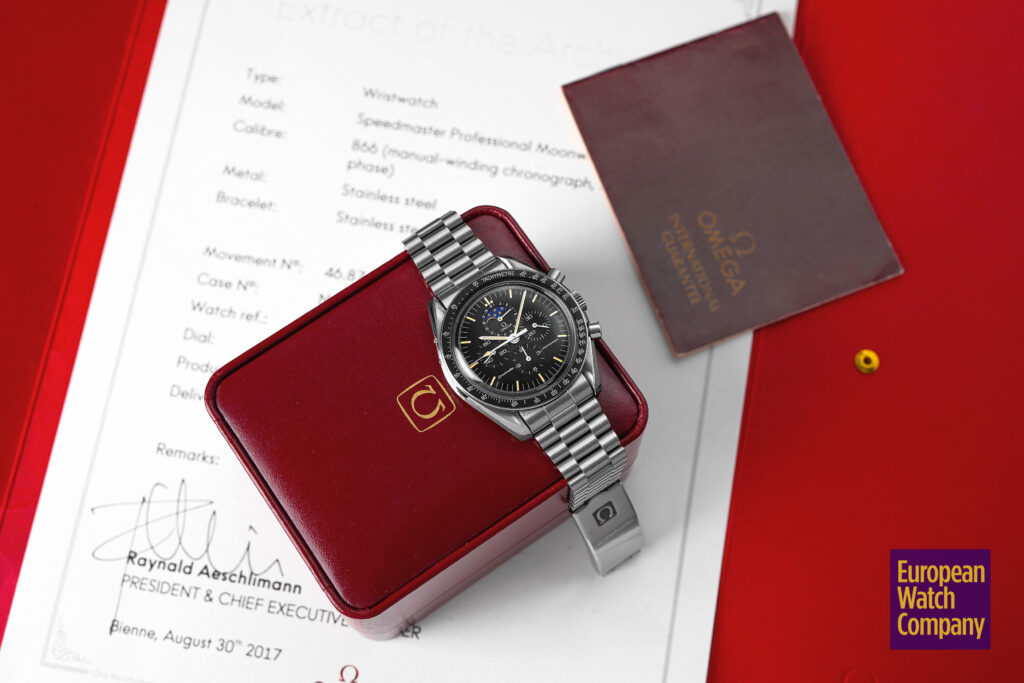
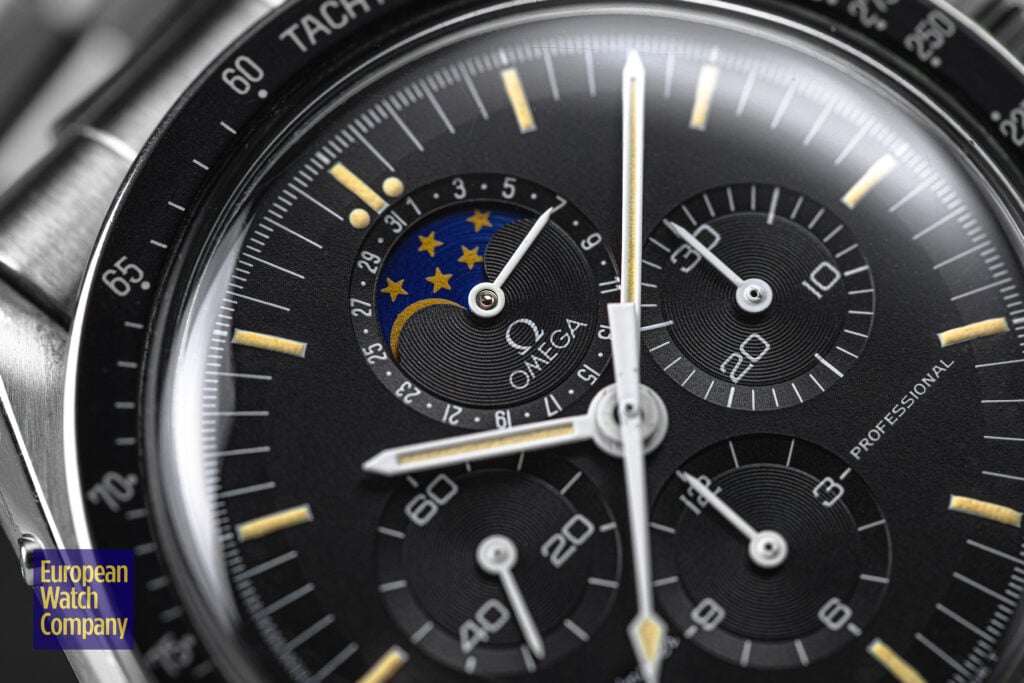
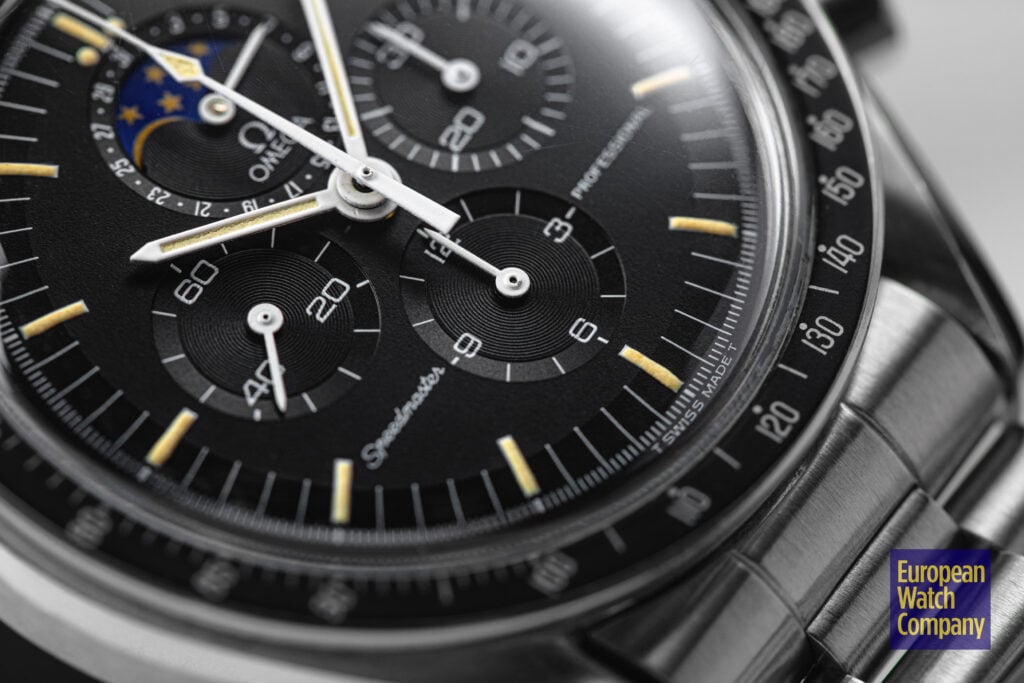
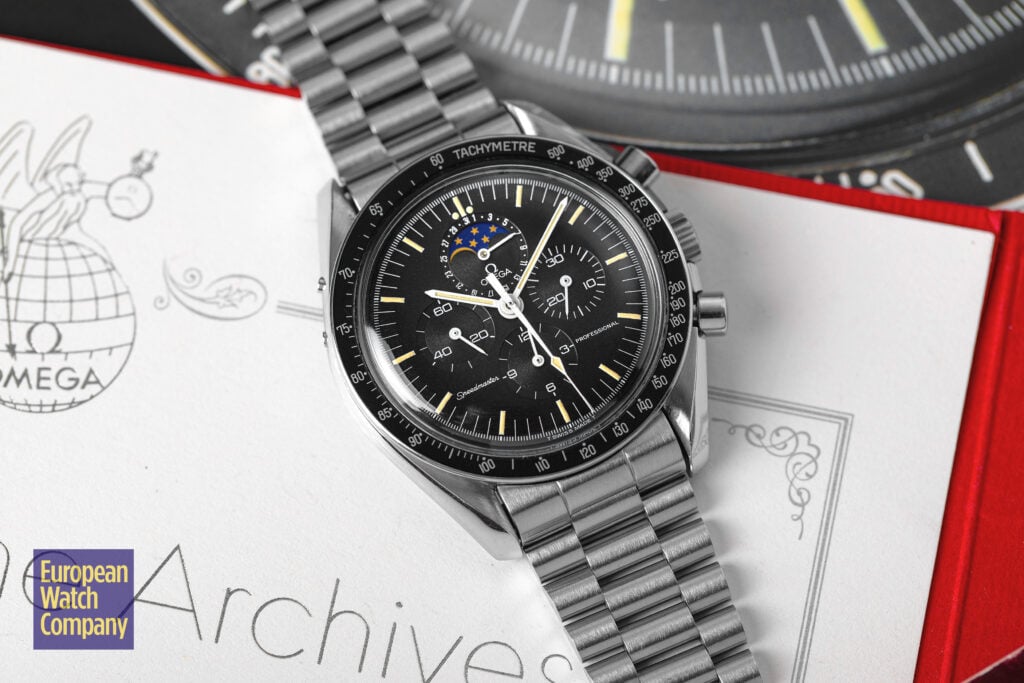
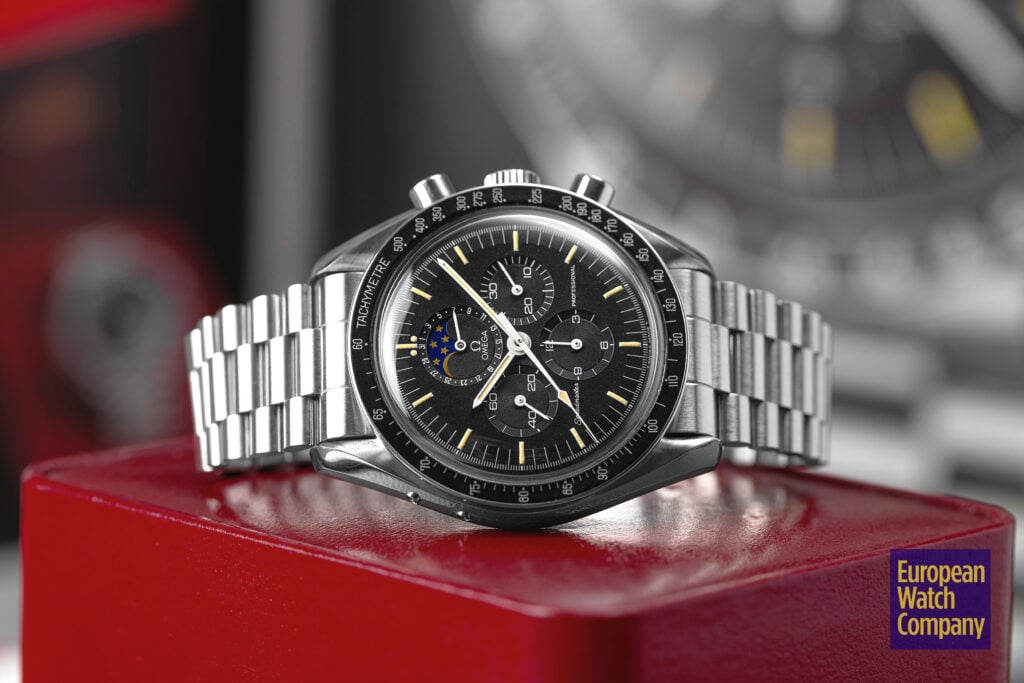
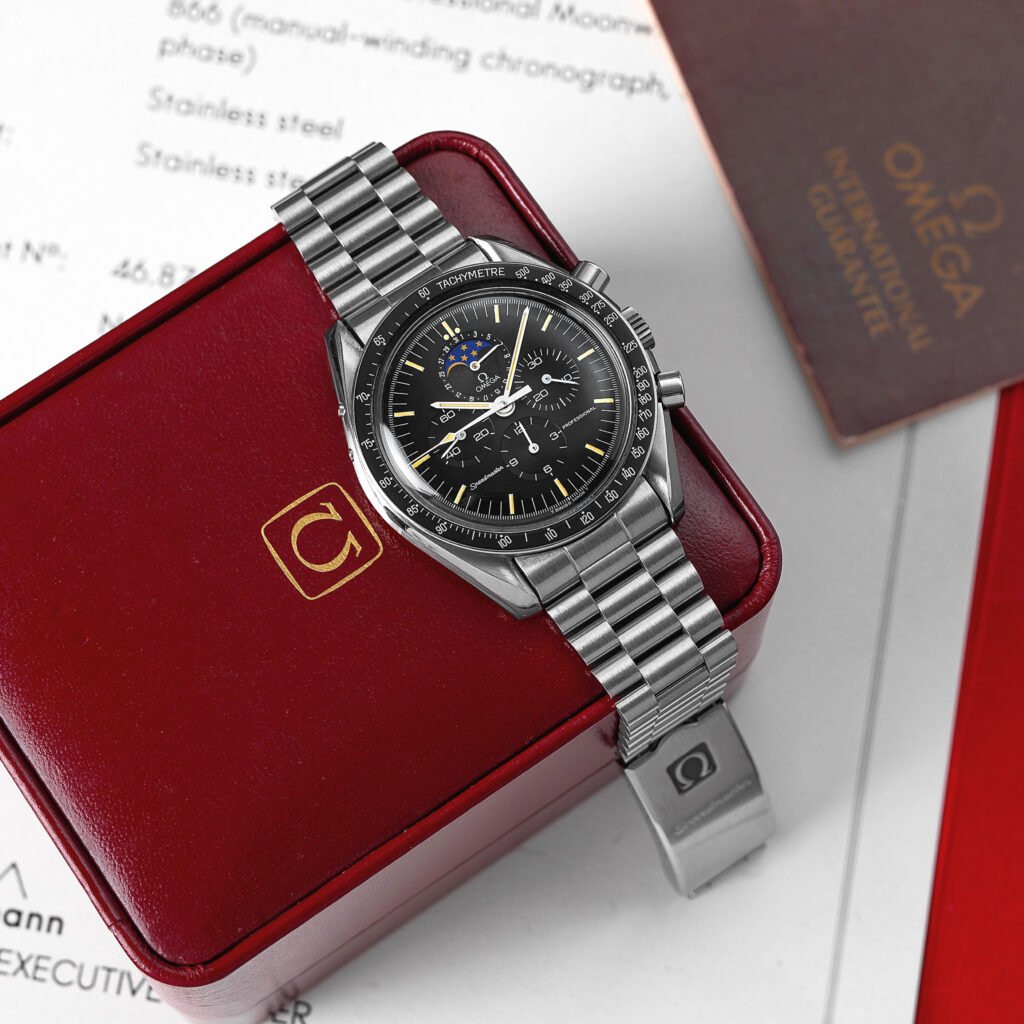
Previous Article
New & Noteworthy: The Vacheron Constantin Overseas 4300V Perpetual Calendar Ultra- Thin Skeleton
Next Article
The Best Independent Watches to Buy Now
Join 75,000+ Other Watch Enthusiasts
Get our new arrivals first.